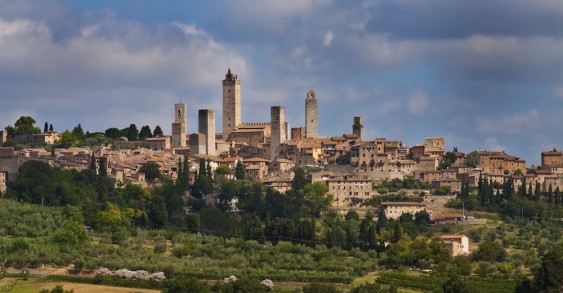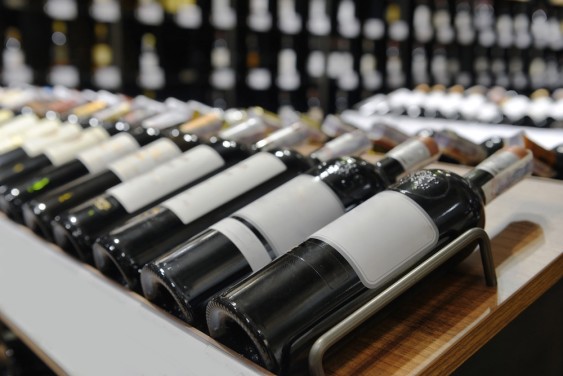Though you can probably tell from the fact that I started a wine website that I think wine is pretty super in general, there’s actually one specific wine designation that proclaims its superlativeness for itself: Super Tuscan.
As you might guess from the name, Super Tuscans come from…Tuscany! Now, when it comes to wine, Tuscany (and the rest of Italy, for that matter) is pretty strict about what grapes you can (or even must) use, where you can make the wine, and a number of other factors. One of Italy’s most famous wine regions, Chianti, had some of the toughest rules on the books. But in the 1970s, a group of wine producers from there decided to go rogue and start making wines with non-traditional grapes for the area such as Merlot, Cabernet Sauvignon and Syrah, and using small French oak barrels instead of the larger casks that were typically used to age wines in the area.

Super Tuscans come from…Tuscany, duh! Photo credit: Shutterstock.
They did so not because they were looking for shortcuts or chasing trends, but rather because they wanted to try experimenting with different grape varieties in the hopes of making high-quality wines and interesting blends.
However, at the time, there was no designation to distinguish the wines they produced from regular old, low-quality, cheap table wines. Because these wines were not made with to the varieties called for under the DOC (Denominazione di Origine Controllata) laws, though, they had to be labeled vini da tavola, or table wine.
But these wines were anything but your garden-variety swill. They were being produced with the same strict quality controls, care in the vineyard and rigorous methods as the best traditional Tuscan wines. They just weren’t made using the Tuscan grape variety Sangiovese. Or rather, some of them included Sangiovese, but also other varieties that were forbidden under the old DOC rules.
What were the wine producers to do? In addition to lobbying the Italian government to do something about the naming and designation of these wines, they started calling them “Super Tuscans,” (though the term probably originated with any number of food/wine writers who tried the wines around then). The term was pretty much sanctioned in 1992 when the Italian government created a new designation for the region denoted Toscana Indicazione Geografica Tipica (IGT) which could be used to label wines made in Tuscany from Tuscan grapes. Suddenly, so much more was possible.

If you’re thinking about buying a Super Tuscan, it’s important to ask what the blend is. Photo credit: Shutterstock.
Indeed, apart from the new legitimacy conferred by the IGT designation, a lot of folks in the wine world tended to agree that many of the wines being made this way were, in fact, super. Many are now considered prestigious and retail for over $100 a bottle these days and have become some of Italy’s most-recognized wines. You might recognize such names as Tignanello (made by Antinori), Sassicaia and Solaia among them (a lot of them end in “ia”!).
So what does that mean for you? First, there are a lot of super expensive Super Tuscans, but you can also find some relative bargains. Many wine stores and more casual restaurant wine lists will just list them as Super Tuscans, but if you’re in fancier places, you could see them denoted as “Toscana” or “Toscana IGT,” so keep an eye out for those headers.
Many of these wines incorporate those Bordeaux red grape varieties like Cabernet Sauvignon and Merlot. Others throw in some Syrah, which is more typical of France’s Rhone Valley. Like classic Tuscan wines, including Chianti, a lot also use the region’s flagship red grape, Sangiovese.
So it’s important to ask the wine store clerk or sommelier what the exact blend is of a wine you’re looking to try, and what you might expect from the flavor profile and dishes to enjoy with it because Super Tuscans can be a mixed bag. But that makes them more fun!
Have any questions? Feel free to tweet me @clustercrush.

